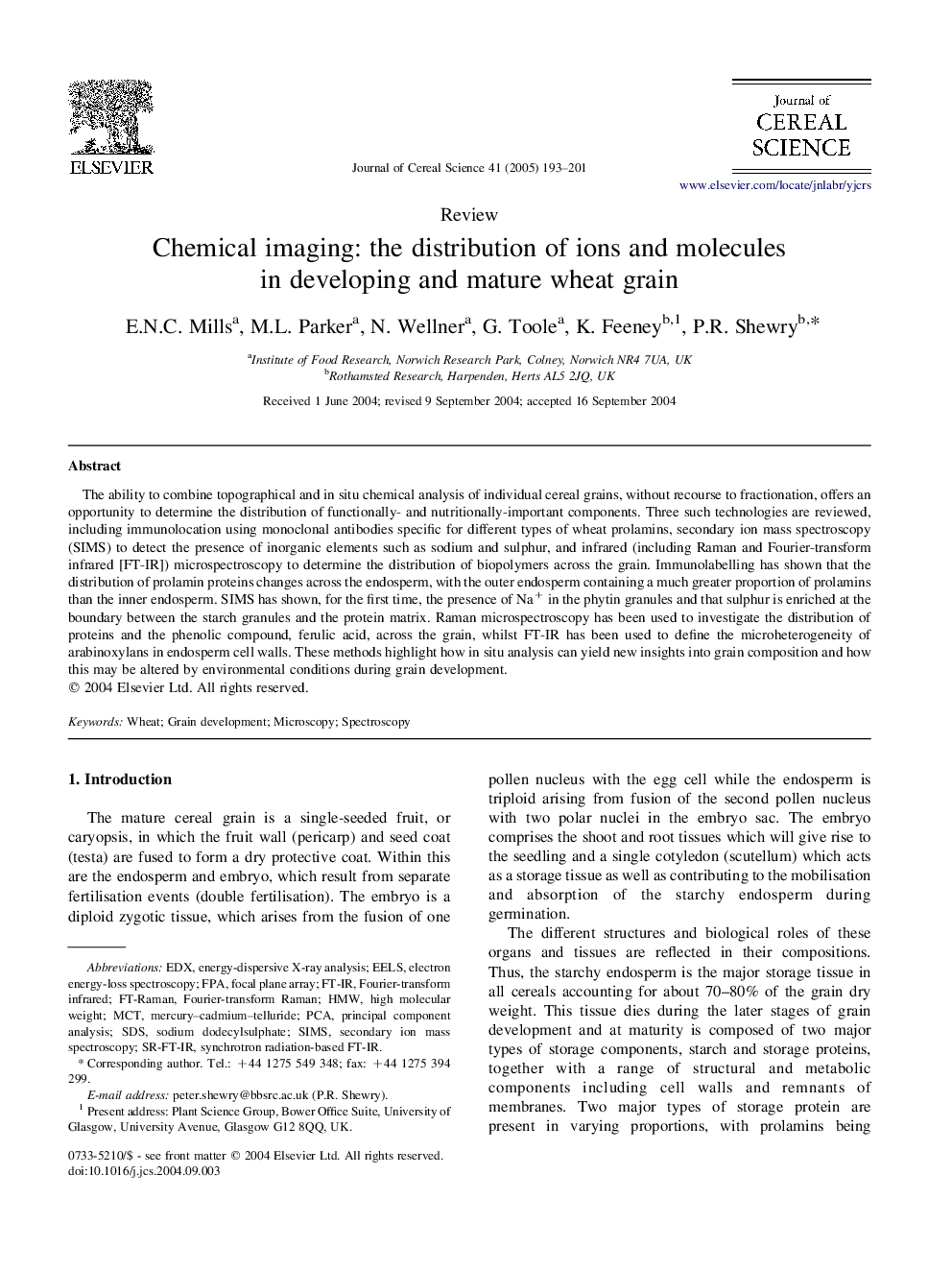| Article ID | Journal | Published Year | Pages | File Type |
|---|---|---|---|---|
| 9474531 | Journal of Cereal Science | 2005 | 9 Pages |
Abstract
The ability to combine topographical and in situ chemical analysis of individual cereal grains, without recourse to fractionation, offers an opportunity to determine the distribution of functionally- and nutritionally-important components. Three such technologies are reviewed, including immunolocation using monoclonal antibodies specific for different types of wheat prolamins, secondary ion mass spectroscopy (SIMS) to detect the presence of inorganic elements such as sodium and sulphur, and infrared (including Raman and Fourier-transform infrared [FT-IR]) microspectroscopy to determine the distribution of biopolymers across the grain. Immunolabelling has shown that the distribution of prolamin proteins changes across the endosperm, with the outer endosperm containing a much greater proportion of prolamins than the inner endosperm. SIMS has shown, for the first time, the presence of Na+ in the phytin granules and that sulphur is enriched at the boundary between the starch granules and the protein matrix. Raman microspectroscopy has been used to investigate the distribution of proteins and the phenolic compound, ferulic acid, across the grain, whilst FT-IR has been used to define the microheterogeneity of arabinoxylans in endosperm cell walls. These methods highlight how in situ analysis can yield new insights into grain composition and how this may be altered by environmental conditions during grain development.
Keywords
Related Topics
Life Sciences
Agricultural and Biological Sciences
Agronomy and Crop Science
Authors
E.N.C. Mills, M.L. Parker, N. Wellner, G. Toole, K. Feeney, P.R. Shewry,
